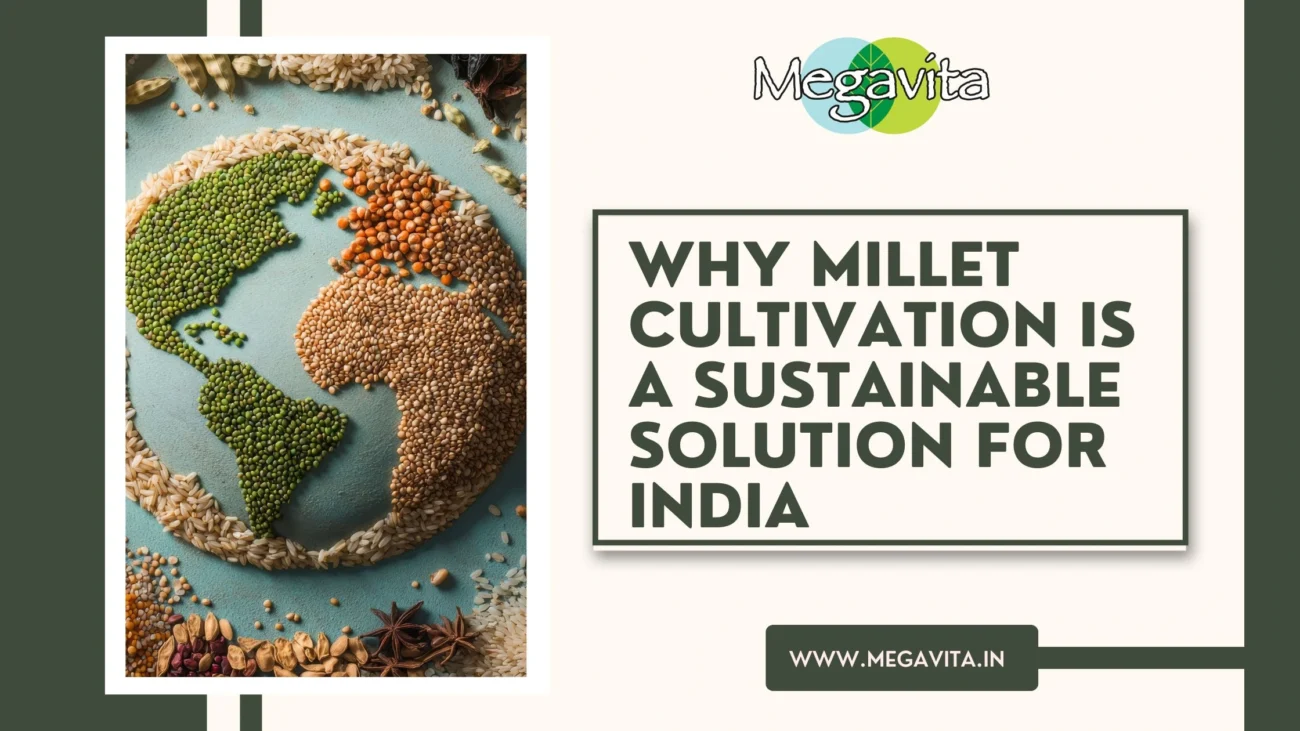
While the world is grappling with the twin problem of hunger and global warming, India has been fortunate enough to be gifted with the arrival of a ray of hope in the form of an extremely ancient but resilient crop called millet. Nature-friendly and healthy, millet cultivation is a one-of-its-kind green farming solution that is not just treating environment ailments but is also spreading health-giving millet food.
With the natural food and wellbeing trend still growing strong, millet based food products were a sensation across India. Let us see how millet farming is encouraging sustainable agriculture, rural prosperity, and a healthier choice for the Indian consumer.
1. Why Millet Farming is Sustainable?
Millets are water-saving crops, in that they consume less water, chemical fertilizer, and pesticide. Millets are semi-dry and dry season crops and are cultivable, whereas rice and wheat are water crops which require more water, therefore the best crop for rain-fed agriculture — a very critical contribution of a country like India, where almost 60% of its agriculture is rain-based.
Principal environmental benefits of millet cultivation:
• Least Water Requirement: Millets need 70-80% less water compared to paddy.
• Drought Resistance: They are best suited for poor, dry soils.
• Short Duration Crop: 60–90 days is the duration needed to harvest the majority of millets and thus land occupation for so many days is zero.
• Least Carbon Print: Least input requirement means least greenhouse gas emission from millet farming.
By mainstreaming millets as crops in agriculture, India can take a quantum jump in achieving its SDGs of climate action, sustainable agriculture, and sustainable consumption.
2. Millets: Custodians of the Soil and Biodiversity
Millets increase agrobiodiversity as well as soil fertility. Millets are deep-rooting and soil-binding and thereby prevent soil erosion in exposed, sloping land. Farmers growing a mix of millets also practice genetic diversification to oppose uncertain climatic conditions.
India has been growing a mix of millets including:
• Ragi (Finger Millet)
• Bajra (Pearl Millet)
• Jowar (Sorghum)
• Foxtail Millet
• Barnyard Millet
• Little Millet
Such spread of agricultural practices establishes the local food economy and the local food system in position.
3. Economic Empowerment of Small Farmers
Small and marginal farmers, being the predominant ones to cultivate millets, cultivate millets in tribal and rural regions. Millets are feasible to be grown without external inputs like fertilizers and pesticides and climate shock tolerant during production.
Additionally, rising demand for millets products in urban markets gives new avenues of income generation. Government-initiated International Year of Millets (2023) and Millet Mission also focussed attention and subsidies towards millet farmers.
As millets’ product awareness grows, especially by health-conscious consumers, farmers are also gaining better price, market, and value-addition options such as organic and processed millets.
4. Millets and Public Health: Nature’s Panacea for Lifestyle Diseases
India is currently India is currently experiencing the burden of diabetes, obesity, and heart disease as a result of physical inactivity and poor nutrition. Millets are the gift of nature because they have high fiber content, low glycemic index, and high minerals.
It is thus one of the best millets for diabetes:
•Slow Release of Sugar: Millets release sugar slowly in relation to rice and wheat polish and give rise to sustained blood sugars.
•Rich in Fibre: Provide a feeling of fullness and support easy digestion.
•Antioxidants & Magnesium: Lower blood pressure and inflammation.
The modern-day consumer is increasingly adopting food items made from millet like gruel, flours, biscuit, millet dosa mixes, and rice and wheat polish-based snack bars. The increasing demand brings millet to the top of India’s plate of nutrition now.
5. Farm to Plate: The Millet Food Products Revolution
With the processing and packaging technology, even the conventional millets got modified now to be easy-to-use, ready-to-consume, ready-to-eat foods to suit the pace of the modern age. Companies like Megavita are leading in promoting millet based food products as whole, clean, preservative-free foods.
Foods that are conventionally consumed and which are being processed from millets are:
• Ragi Flour – best suited to porridge, roti, and infant food.
• Navara Red Rice – rich in antioxidants and high fiber.
• Kodo Millet Rice – diabetic-friendly substitute for white rice.
• Panangal Kandam and Arrowroot Powder – easy on digestive system as well as immunity.
All these are reducing nutritional value of millets but at lower cost to lower cost to more masses.
6. Challenges and the Way Forward
Millets cultivation, as lucrative as it is, also poses the following challenges:
• Uncertainty: The consumers are not aware of the use of millets.
• Market Access Barriers: The small farmers do not have storage, processing, and transportation facilities and infrastructure.
• Policy Support: The government support and MSP policy must be maintained in the long term.
With government agencies, NGOs, food entrepreneurs, and private firms such as Megavita, they can be addressed in the most effective manner. Millet value chain production upscaling and public consciousness could be the bridge between rural producers and urban space consumers.
Conclusion: Megavita’s Commitment towards Sustainable Health
We, at Megavita, feel that the journey to a healthy world and a healthy body begins with what we cultivate and what we consume. Being ardent promoters of local, sustainable, and healthy millet products in india, we envision a sustainable millet industry in India.
If you are looking to include millets in your life, then do buy from our rich collection of finest quality and carefully handpicked varieties. From ragi flour to kodo millet rice, they are processed with greatest care to be gentle on your body as well as the environment.
Select Megavita, Best millet brand in India— where convention meets sustainability.

